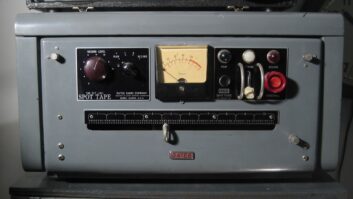
This is one in a series of interviews about legal, unlicensed low-power broadcasting and how these systems are being used during the coronavirus crisis in the United States.
Radio Design Group in Oregon is planning to introduce a low-power AM transmitter to support current interest in specialized, very local radio broadcasting. It calls the project Parking Lot Radio.
Jim Hendershot is president.
“After the lockdown order for Oregon, I got a call from an old friend who is a retired missionary,” he said. “The congregation where he attends was looking for a solution to holding services while maintaining social distancing. Many churches have gone to online broadcasting, but many of the folks at this church are older with limited or no internet capability. The thought of a drive-in church appealed to the congregation, and so they were looking for a transmitter solution to send audio to car radios.”
[Related: Look for FCC Certification When Buying a Part 15 FM Transmitter]
Hendershot said he wasn’t satisfied with the legal range of available low-power FM transmitters, “and the church was unwilling to buy one of the higher-power illegal units.”
“The AM Part 15 rules allow for a stronger signal than the FM rules. Since super hi-fi stereo isn’t really necessary, and AM can be made to sound really good if done right, I decided to go with AM.” The unit will come with a basic wire antenna but could be attached to a whip up to 3 meters per FCC regulations. “We’re still investigating the range, but we figure it will be enough to cover the average parking lot,” he said. “If more area needs to be covered, more units can be used, and we are designing the system to work well in that environment.”
Units will be sold direct at first. Hendershot projects a price of under $250, though that is not set yet.
The company is documenting the project on a website. The design of the Parking Lot Radio includes a balanced audio input, which Hendershot says is compatible with professional sound boards, rather than a 1/8 inch stereo plug that hooks up to a computer or MP3 player. “We did this knowing that the average user would more likely have a ‘real’ sound system rather than a cheesy karaoke machine or some other such piece.” The system will be manufactured in the U.S.







